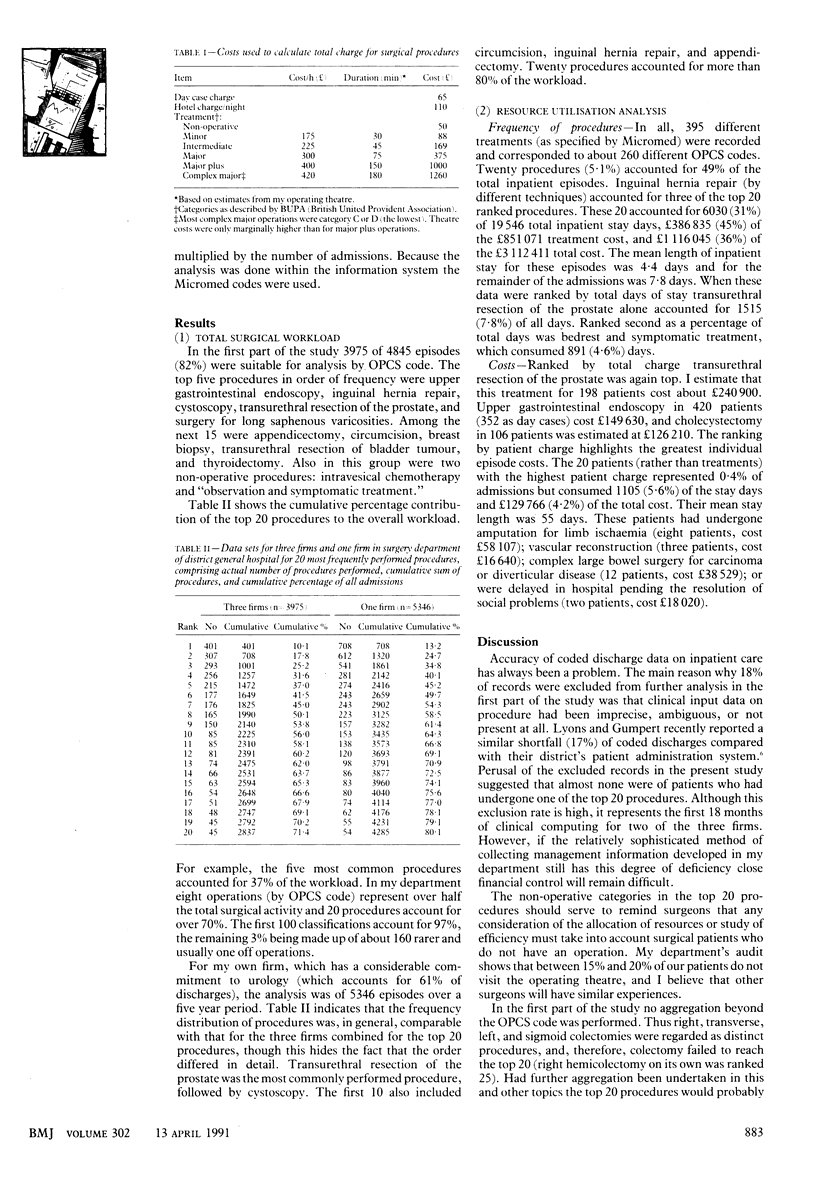Abstract
OBJECTIVE--To assess the contribution of the most frequently performed procedures to surgical workload and to evaluate the financial implications. DESIGN--Analysis of data held on the department's computerised clinical information system. SETTING--Department of surgery in a district general hospital. PATIENTS--4845 patients were treated by surgeons in three consultant firms over an 18 month period and 5346 patients by surgeons in a single firm over a five year period. MAIN OUTCOME MEASURES--Percentage and cumulative percentage contribution to workload in order of frequency by procedure. Costs of the commonest and costliest treatments. RESULTS--Half of the workload of the department was encompassed by eight procedures. Twenty procedures accounted for 70% of the work. For a single firm 20 procedures represented over 80% of all the surgical work. Transurethral prostatectomy was the treatment that consumed most resources (pounds 240,900 for 198 patients in 18 months). The costliest patients were those who had undergone complicated large bowel surgery, vascular reconstructions, or amputation. CONCLUSIONS--Clinicians and managers need to appreciate the importance of the most common surgical procedures. It is vital that performance and costing of these procedures are optimum as they contribute disproportionately to overall results and finance.
Full text
PDF


Selected References
These references are in PubMed. This may not be the complete list of references from this article.
- Ellis B. W., Michie H. R., Esufali S. T., Pyper R. J., Dudley H. A. Development of a microcomputer-based system for surgical audit and patient administration: a review. J R Soc Med. 1987 Mar;80(3):157–161. doi: 10.1177/014107688708000311. [DOI] [PMC free article] [PubMed] [Google Scholar]
- Ellis B. W., Rivett R. C., Dudley H. A. Extending the use of clinical audit data: a resource planning model. BMJ. 1990 Jul 21;301(6744):159–162. doi: 10.1136/bmj.301.6744.159. [DOI] [PMC free article] [PubMed] [Google Scholar]
- Lyons C., Gumpert R. Medical audit data: counting is not enough. BMJ. 1990 Jun 16;300(6739):1563–1566. doi: 10.1136/bmj.300.6739.1563. [DOI] [PMC free article] [PubMed] [Google Scholar]


